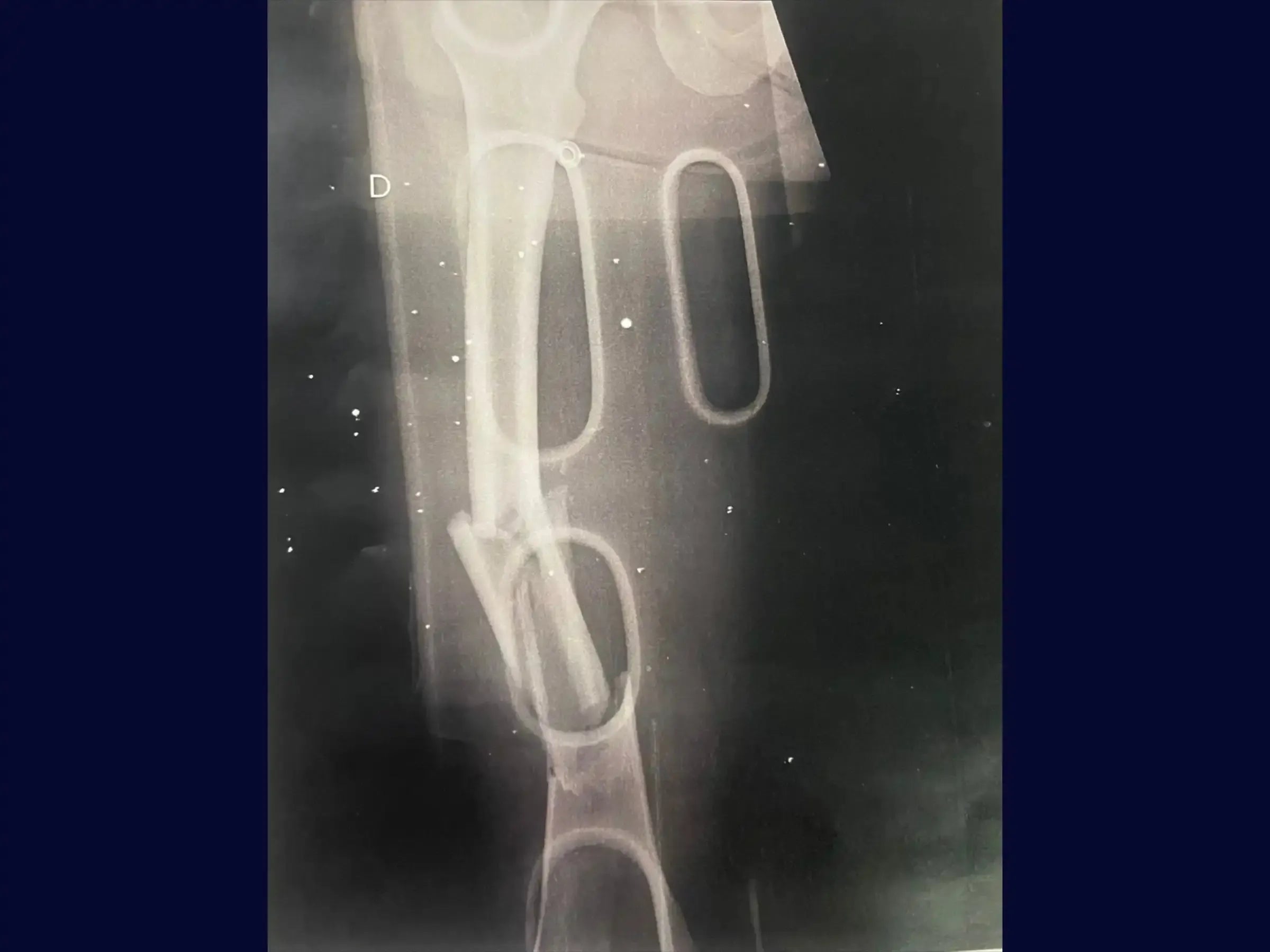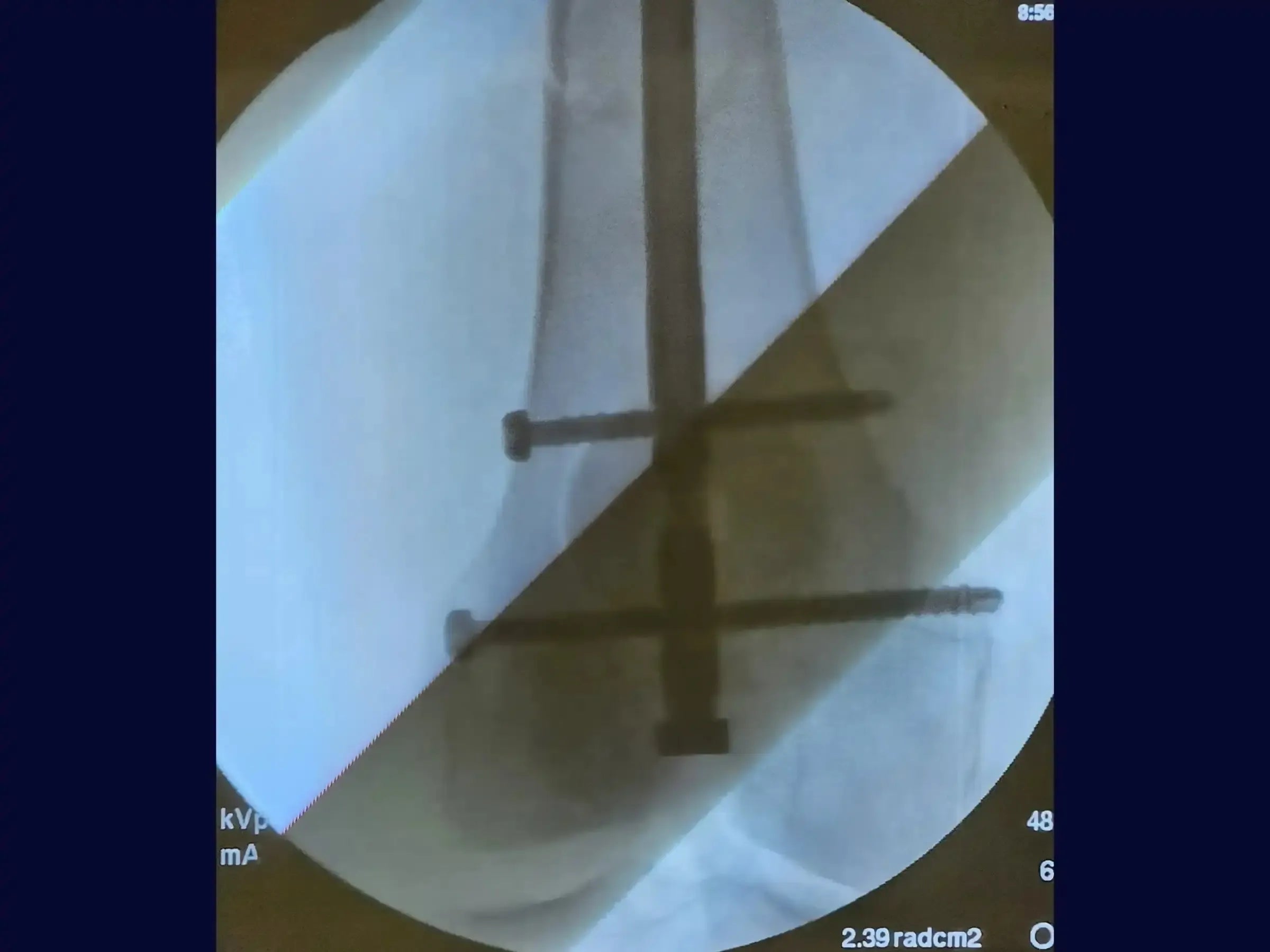






Diaphyseal Femur Fracture - Retrograde Intramedullary Nail
Master the retrograde rod with 4K clarity at critical surgical points.

Dr. Savio Chami
Médico Ortopedista
Disponível em::





Videos em 4k
Dublagem Profissional
Escolher opções







Diaphyseal Femur Fracture - Retrograde Intramedullary Nail
Preço promocionalR$ 0,00

Dr. Savio Chami
Médico Ortopedista
Questions & Answers loading...
Descrição
Enhance your skills in the treatment of diaphyseal femur fractures in young patients, often resulting from high-energy trauma. This training offers a technical immersion in the retrograde intramedullary nail fixation procedure, emphasizing proper patient positioning, precise surgical access, and the crucial steps for nail insertion and locking.
Training Focus:
- Treatment of diaphyseal femur fractures, especially in young patients with high-energy trauma.
- Retrograde intramedullary nail fixation technique.
- Patient positioning and strategic surgical access.
- Opening of the medullary canal and fracture reduction.
- Nail insertion and proximal and distal locking.
Detailed Content:
- Optimized Patient Positioning: Learn to position the patient in a supine position with the knee flexed at approximately 40 degrees, using the surgical table itself to ensure stability.
- Precise Surgical Access: Master the incision technique in the flexed knee region, specifically over the patellar tendon, extending from the inferior pole of the patella to the tuberosity of the tibia.
- Effective Medullary Canal Opening: Understand the importance of using a motor for opening the medullary canal in young patients, preventing damage to the patellar cartilage with the use of soft tissue protectors.
- Fracture Reduction with Lateral Assistance: Learn how to make a lateral incision of approximately two centimeters to assist in the reduction of the fracture, introducing your finger for palpation, especially in challenging cases with significant muscle mass and edema.
- Milling and Measurement of the Rod: Develop the skill to mill the medullary canal to allow the introduction of an intramedullary rod of appropriate diameter, and perform the measurement of the rod using the guide wire itself with the assistance of two similar wires.
- Introduction of the Retrograde Intramedullary Rod: Learn how to introduce the rod retrogradely while constantly checking the fluoroscopic images, ensuring that the end of the rod directed towards the hip exceeds the lesser trochanter to avoid stress and the risk of subtrochanteric fracture.
- Precise Distal Locking: Master the fabrication of distal locking screws using a specific guide, drill, and gauge. Understand the need for internal rotation of the knee to assess the correct screw size due to the trapezoidal shape of the distal femur, preventing false impressions.
- Minimally Invasive Proximal Locking: Perform proximal locking under fluoroscopy, with minimally invasive access, ensuring the profile is checked through leg rotation to confirm the correct size of the lock, even with significant muscle mass.
- Optimized Results: Achieve surgical results where the rod is positioned above the lesser trochanter and following the Blumensaat line, without prominences at the knee, allowing for some mobility in the postoperative period.
Included Material:
- Complete Technical PDF: Detailed educational document that describes the entire surgical procedure for the treatment of diaphyseal femur fractures using retrograde intramedullary nail, covering everything from patient positioning to closure.
Enhance your skills in the treatment of diaphyseal femur fractures. Enroll now and master advanced techniques with retrograde intramedullary nail to optimize outcomes in complex trauma cases.

